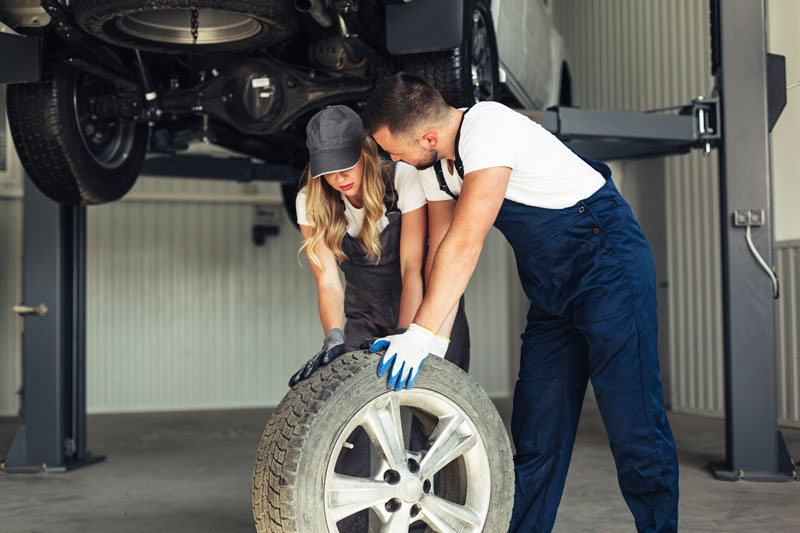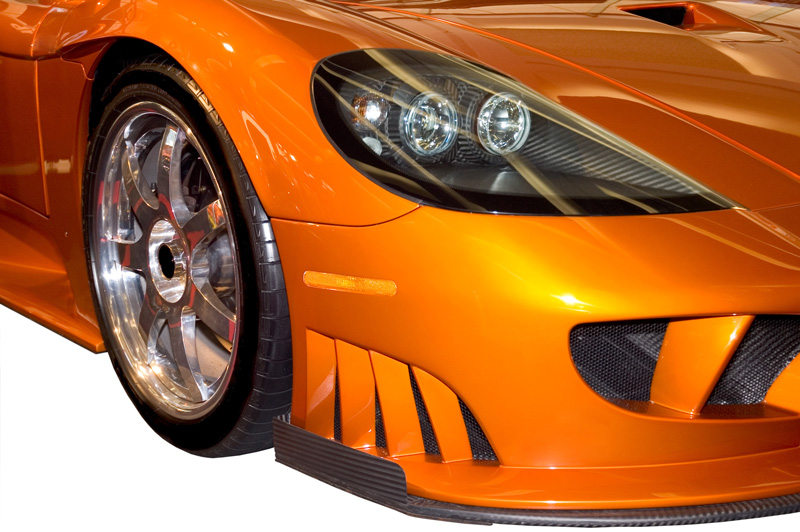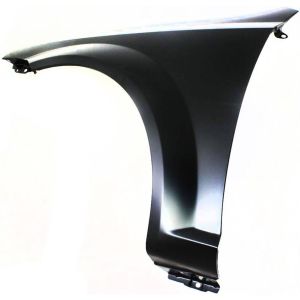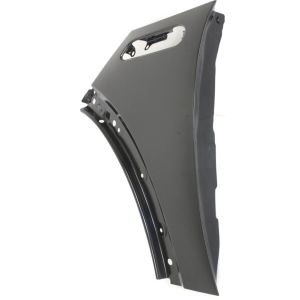Have you ever noticed your car pulling to one side or your tires wearing down unevenly? These can be signs that your car's wheel alignment is off. Proper wheel alignment is more than just an important term.
It's essential to your car's performance, your safety on the road, and even impacts fuel efficiency. But what exactly is wheel alignment and why does it matter? Let's explore this critical aspect of vehicle maintenance and find out why it's important to keep your wheels properly aligned.
Key Takeaways:
- Wheel alignment involves adjusting the camber, caster, and toe angles of a car's wheels for optimal performance and safety.
- It ensures even tire wear, better fuel efficiency, and improved handling.
- Misaligned wheels may cause decreased steering responsiveness and the vehicle may veer to one side.
- Wheel alignment should be carried out every two years, or more frequently if driving on rough roads.
- Ignoring wheel alignment can lead to premature tire replacement, decreased fuel efficiency, and increased risk of accidents.
What Is Tire/Wheel Alignment and Why Does It Matter?
Imagine adjusting your car's suspension, the system that connects your vehicle to its wheels - that's what tire or wheel alignment is all about, and it's essential for your safety, tire longevity, and overall driving experience.
But, let's clear up some alignment misconceptions. It's not about adjusting the tires or wheels themselves, but rather the angles at which they hit the road.
The benefits of alignment are numerous. To start, it guarantees your tires wear evenly, extending their lifespan and saving you money in the long run. Next, it improves your gas mileage. When your wheels are aligned properly, your car doesn't have to work as hard, and that reduces fuel consumption.
But that's not all. Proper alignment enhances your driving comfort. It prevents your vehicle from pulling to one side, which can be both annoying and dangerous. It also provides you with better handling and prevents odd vibrations in your steering wheel.
Don't underestimate the importance of regular alignment checks. Overlooking this aspect of car maintenance can lead to bigger problems down the line, potentially putting your safety at risk.

Common Symptoms That Your Car Is Out of Alignment
While you're cruising down the road, you might start to notice certain signs that your car is out of alignment.
One common symptom is a decrease in steering responsiveness. This means your car doesn't react as quickly or accurately to your steering commands. You may also notice that your car's handling is off, veering to the left or right even when you're steering straight.
Another sign that your car may be out of alignment is uneven tire wear. This is often a result of your wheels not being properly aligned, causing certain parts of your tires to wear down faster than others.
It's also important to note how alignment impacts your car's fuel efficiency. When your wheels are out of alignment, your car has to work harder to move, which can lead to increased fuel consumption. So, if you've noticed a sudden drop in your car's fuel efficiency, it may be due to misalignment.
Explanation of the Different Components of Wheel Alignment
Let's break down the three key components of wheel alignment: camber, toe, and caster.
Camber
Your car's camber is the inward or outward angle of the tire when viewed from the front of the vehicle. If the top of the tire leans away from the vehicle, it's a positive camber. If it leans towards the vehicle, it's a negative camber.
Improper camber adjustment can lead to uneven tire wear and handling issues. It's crucial to regularly check the camber, along with other alignment angles, to guarantee top vehicle performance.
Here are a few alignment maintenance tips. Always get your car's alignment checked after a collision or hitting a large pothole. Regularly inspect your tires for uneven wear. Lastly, schedule a professional alignment check if you notice your vehicle pulling to one side. Proper camber adjustment is crucial to your car's health.
Toe
Another important component of wheel alignment is the toe, which refers to the extent to which your tires turn inward or outward when viewed from above. It's one of the essential alignment angles that you'll need to take into account during steering adjustments.
When your car's toe alignment is off, you might notice uneven tire wear or your car pulling to one side. If the toes are turned inwards, it's called 'toe-in' or 'positive toe'. On the contrary, if they're pointing outwards, it's 'toe-out' or 'negative toe'.
Remember, proper toe alignment significantly influences your car's stability and handling. It's always a good idea to get your car's wheel alignment checked regularly to ensure peak performance and to extend the life of your tires.
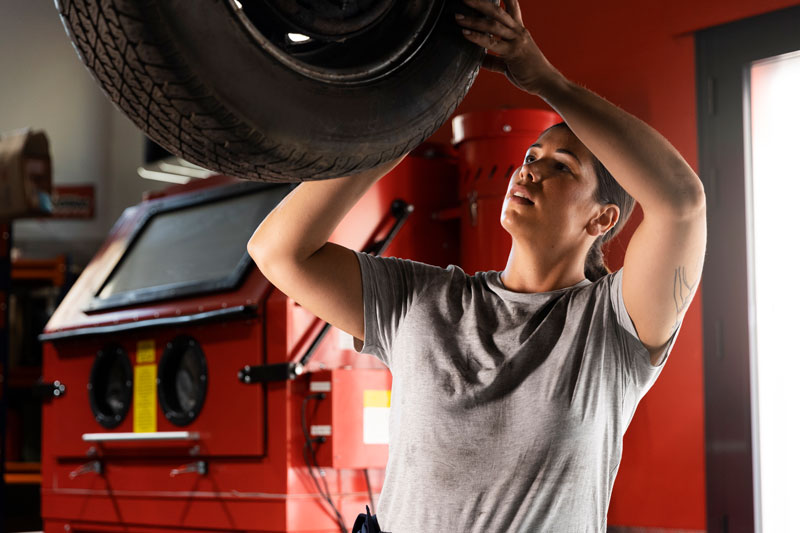
Caster
Moving on to the third component of wheel alignment, the caster is the angle of your car's steering axis when viewed from the side.
This isn't something you'd notice by just looking at your vehicle, but it's vital for steering stability. A positive caster angle means the steering axis tilts towards the driver, while a negative caster angle means it tilts towards the front of your car.
These alignment angles influence your car's handling and cornering ability. If you're feeling a drift or pull even when driving on a flat road, it might be due to an improper caster angle.
Adjusting the caster can improve your vehicle's balance and stability, ensuring a smoother and safer ride. Always remember, correct alignment isn't just about tire longevity, it's also about your safety on the road.
How Often Should You Do It?
Typically, you should have your car's wheel alignment checked every two years, but if you frequently drive on rough roads, you might need to do it more often. This alignment frequency is generally recommended to guarantee top-notch performance and safety of your vehicle.
The cost for this service can vary, but it's usually a modest investment compared to the potential expenses and problems that can arise from neglecting this essential maintenance step. Some signs that your car may need alignment include uneven tire wear, your vehicle pulling to one side, or your steering wheel being off-center while driving straight.
The benefits of regular wheel alignment are manifold. It can enhance your car's overall performance, improve fuel efficiency, and extend the lifespan of your tires. However, there are also some drawbacks.
For instance, if your car's alignment is out of balance, it can lead to premature tire wear, affecting your driving comfort and safety.
Are There Any Potential Risks?
Ignoring wheel alignment can pose serious risks to your car's performance and your safety on the road. Misaligned wheels can result in uneven tire wear, reducing the lifespan of your tires and forcing premature replacement. This misalignment can also affect your car's handling, making it harder to steer, especially in bad weather.
The alignment risks are not limited to your car's performance. Your personal safety is also an important consideration. Misalignment can cause your car to pull to one side, increasing the risk of accidents, particularly at high speeds. Additionally, a misaligned car requires more energy to move, in turn burning more fuel and impacting your wallet.
Prevention is better than cure. Regular checks and timely alignment can prevent these risks. It's also essential to get alignment checked after an accident, hitting a curb or driving on rough roads as these can disrupt your car's alignment.
In terms of alignment safety, the implications of ignoring this issue are clear. Poor alignment can lead to dangerous driving conditions and increased wear and tear on your car. So, regular alignment checks should be an integral part of your vehicle maintenance routine.
DIY or Professional - Pros and Cons
While you might be tempted to save some bucks by aligning your tires at home, it's important to weigh the pros and cons of a DIY approach versus hiring a professional. In the DIY vs professional debate, consider the alignment benefits and potential pitfalls of each option.
DIY alignment can be cost-effective, especially if you're handy with tools and have a good understanding of your car's mechanics. However, it requires time, patience, and precision. A slight misstep could lead to uneven tire wear, reduced fuel efficiency, and an uncomfortable ride.
On the other hand, professionals have the right tools and expertise to ensure proper alignment. They can quickly diagnose any issues and make accurate adjustments. This precision leads to alignment benefits like extended tire life, improved fuel economy, and smoother handling. The downside? You'll have to shell out for the service.
Conclusion
So, you might think wheel alignment is just another necessary expense, right? Wrong. It's vital for your car's performance, safety, and your wallet in the long run. Ignoring alignment issues can lead to uneven tire wear, poor handling, and reduced fuel efficiency.
Whether you opt for a DIY approach or hire a professional, regular checks and adjustments are a must. Don't overlook wheel alignment - it's more important than you might realize.
FAQs (Frequently Asked Questions)
What Are the Signs of a Severe Wheel Misalignment Issue in a Car?
- You'll notice severe wheel misalignment by your car pulling to one side, uneven tire wear, or a crooked steering wheel. Don't ignore these signs; misalignment dangers are real and alignment costs are worth preventing them.
How Long Does a Wheel Alignment Procedure Typically Take?
- Wheel alignment usually takes about an hour. But don't try DIY alignments, you're not a superhero! Save time, money, and potential alignment costs - leave it to the professionals. They've got the skills and equipment.
Does Wheel Alignment Affect Fuel Efficiency?
- Yes, wheel alignment does impact fuel efficiency. When your car's not properly aligned, it works harder, leading to increased fuel consumption. Despite alignment costs, avoiding a DIY alignment guarantees the best efficiency and cost savings in the long run.
